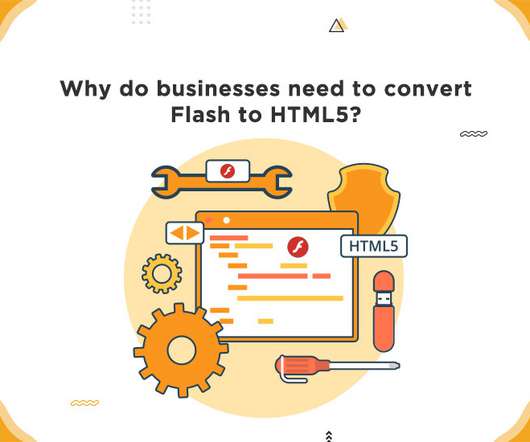Why do businesses need to convert Flash to HTML5?
Creativ Technologies
MAY 2, 2022
Flash was earlier used to produce marvelous special effects in educational videos. There were many reasons for the eradication of Flash from the elearning scene. The problem with Flash leading to its extinction is the lack of accessibility of its software on mobile phones. Ability to write HTML5 code on a Smartphone.





























Let's personalize your content